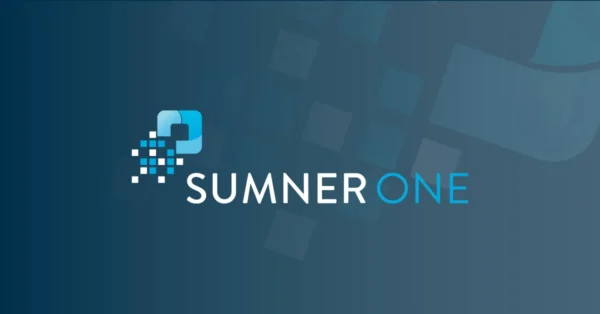These add-ons can provide your customers with a competitive advantage.
Few expect printing to result in a stack of printed pages. Some finishing is usually anticipated, ranging from a staple in the upper left corner to a perfect-bound book. Corner staples are hallway copier basics, and more than a few printers can be configured with inline finishing such as saddle-stitching or various comb binding. These may be enough, but finishing involves more than binding.
Broadly speaking, finishing includes corner and edge trimming, perforating, inserting pages, folding, die-cutting, fold-out pages, special trims, adding tabs, perfect binding, and more. Depending on the customer, some features are more important than others. Companies that need such slicing and dicing options sometimes leave money on the table by sending jobs out to a printer when they could have more finishing choices in house.
Tabbed pages, for instance, are a popular trend, but they require a printer with sufficient paper drawers to hold different tabs and the ability to print on them. Not all devices can do this, nor will every customer be inclined to buy a machine with the capability, especially if the need is only sporadic.
Booklets, another popular trend, used to be simple, but that’s not always the case. “Booklets can require advanced finishing capabilities such as binding, folding, or inserting,” said Matt Poliniak, senior manager for product marketing in Canon’s Production Solutions Division. Booklets can be augmented with a square edge on a saddle-stitched book, which provides a perfect-bound appearance. This allows the booklet to lie flat, improving its appearance and facilitating more efficient packaging and distribution. Although not a new technology, square-edged binding on saddle-stitched documents continues to trend, and it’s easy to implement in an office setting.
Inserters raise the bar further. Inserting can merge pages from different print engines, combine color and mono pages, or add a cover. Inserters also augment wire or comb binding, increasingly common options on many printers
Leverage Finishing Capabilities
Like the square-edged booklet, many rising trends result from users leveraging the equipment’s capabilities via automation. Creasing, one such popular feature, places a crease on what will become the spine of booklet covers to help minimize toner cracking. This also isn’t a new practice, but automating it increases accessibility and adds value.
Such versatility helps dealers ensure their customers have the flexibility needed to meet growing customer requirements. Consider large-format printing. These devices are equipped with a software-controlled cutter (sometimes bundled with the printer) and can trim each printed piece based on its size, even following the contours of the image. This usually is better than having an employee attack the print with scissors or an X-ACTO knife.
It’s also better than sending out a job. Remember, when an entire job goes to a local print shop, your dealership isn’t getting anything for those pages—ink or media—and your customer is paying for the work. But suppose your dealership could expand your customers’ finishing capabilities in ways that provide their customers with a surprise?
Consider my friend, who recently bought a used Lexus. Although the car was five years old, she received a personalized full-color booklet about the car, replete with photos, a CARFAX report, service history, and more. The document included a mix of color and mono pages, all three-hole punched, bound with a clear cover, and produced at the dealership. It will probably cost the dealer $2 to $3, but it improves the buying experience for my friend, who buys a car once a decade.
The dealer needed an internet connection, a color printer to punch the holes, and a binder with a clear cover. Interestingly, the owner of the dealership (one of nearly 30 he owns) was an office technology dealer in a previous life. I wonder if he shared this idea with other car dealers or the company that sold him the printer.
Be Transactional
Service bureau owners have told me repeatedly about a trend in motion—one that’s happening and has legs. Bills and statements have always been personalized, but consider the legal, veterinary, dental, or medical practices you may have as customers. All send out bills, statements, and other communications that could be enhanced with other materials or offers. It may or may not be personalized, but finishing is essential, from basic folding to something more involved such as trimming or creasing.
“Any organization regularly creating invoices, notices, booklets, or pamphlets that are put in an envelope require finishing,” noted Maria Krawsek, manager of digital workplace & office products at Konica Minolta Business Solutions, U.S.A. She points out a trend common with other vendors: MFPs with Fiery controllers often can support 80-page booklets and up to 100-page stapling plus advanced color and graphic requirements. This will differentiate your customers beyond simply putting an invoice in the mail.
Prospecting for Trends
You can learn a lot by asking customers questions such as, “How often do you use a local printer because they offer binding, trimming, or other services you can’t do internally?” Or “Would it possibly be valuable, in terms of time or cost, if you could do those things internally?” They’ll usually say, “It depends,” which opens the door to deeper conversations and the discovery of what may become a new trend, at least for that customer, and one your sales team can promote to others.
Next, drive the conversation forward by asking, “Do you create any documents that add value or help forge stronger relationships with customers?” If they do, find out how often they do this and how finishing is involved. Once the customer understands all they can do, would it be more valuable if they did it all themselves?
Consider how customers respond to your questions and how new capabilities can add value or start a new trend. Some answers may come from a combination of the person who signs off on your products and services plus those of a C-level exec who may have a different view of printing costs. What do those individuals want to do? How often? How satisfied are they with the present process?
The answer to these questions and more can provide direction about a customer’s needs. In some cases, sending the jobs out is purely a matter of speed, efficiency, and cost. However, your customers may be unaware of the options you offer. The key is that the jobs have a common need for finishing, and if multiple customers see value, that need becomes a trend.
It’s important to assess the type and amount of finishing needed and its frequency versus the cost of the devices required. Customers don’t want to learn the nuances of printing, so you must determine which ones make sense for a given customer. Your sales team may already know some of this.
Vendors Know This Stuff
Finishing isn’t an all-or-nothing game. Many print shops with limited finishing capabilities work around the limitations of their devices. This is where your knowledge, imagination, and your vendors’ expertise come into play.
OEMs partner with finishing equipment manufacturers as a way of offering complete solutions. Some office technology vendors even list the finishing companies they work with on their websites. Finishing is too complex for any one company, so I called Mark Hunt, director of business development at Standard Finishing, the U.S. distributor for Hunkeler and Horizon finishing systems. Although most of Standard’s business comes from commercial printers, Hunt told me the company works with nearly all of the major office technology vendors and offers several smaller machines intended for office or business use. He added that office technology dealers typically come to Standard Finishing through Canon, Fujifilm, HP, Konica Minolta, Ricoh, or Xerox.
Specialized Expertise
What can help craft successful finishing solutions for dealers is working with vendors you already know to bring in finishing devices proven to work with the printing systems in place. This combined expertise allows dealers to offer a well-balanced system. “There is no finishing application we cannot solve between in-line or near-line options,” said Brian Balow, vice president graphic communications, production solutions, at Ricoh USA. “Authorized dealers can sell finishing solutions as part of our total portfolio.” As part of this, vendors can help dealers understand what’s needed to design the most appropriate solution.
There are many details to consider when offering finishing capabilities. Talking with a vendor’s production specialist helps provide a full understanding of what a finishing solution provides and the support it requires. Depending on the vendor, this may require buying a bundle of capabilities to get the ones desired even if your customer ultimately gains more control over the documents they print and may spend less overall. Understanding customers’ existing needs and those they anticipate and communicating them to your OEMs can help create end-to-end printing and finishing solutions that help make your dealership the go-to resource in your market.


